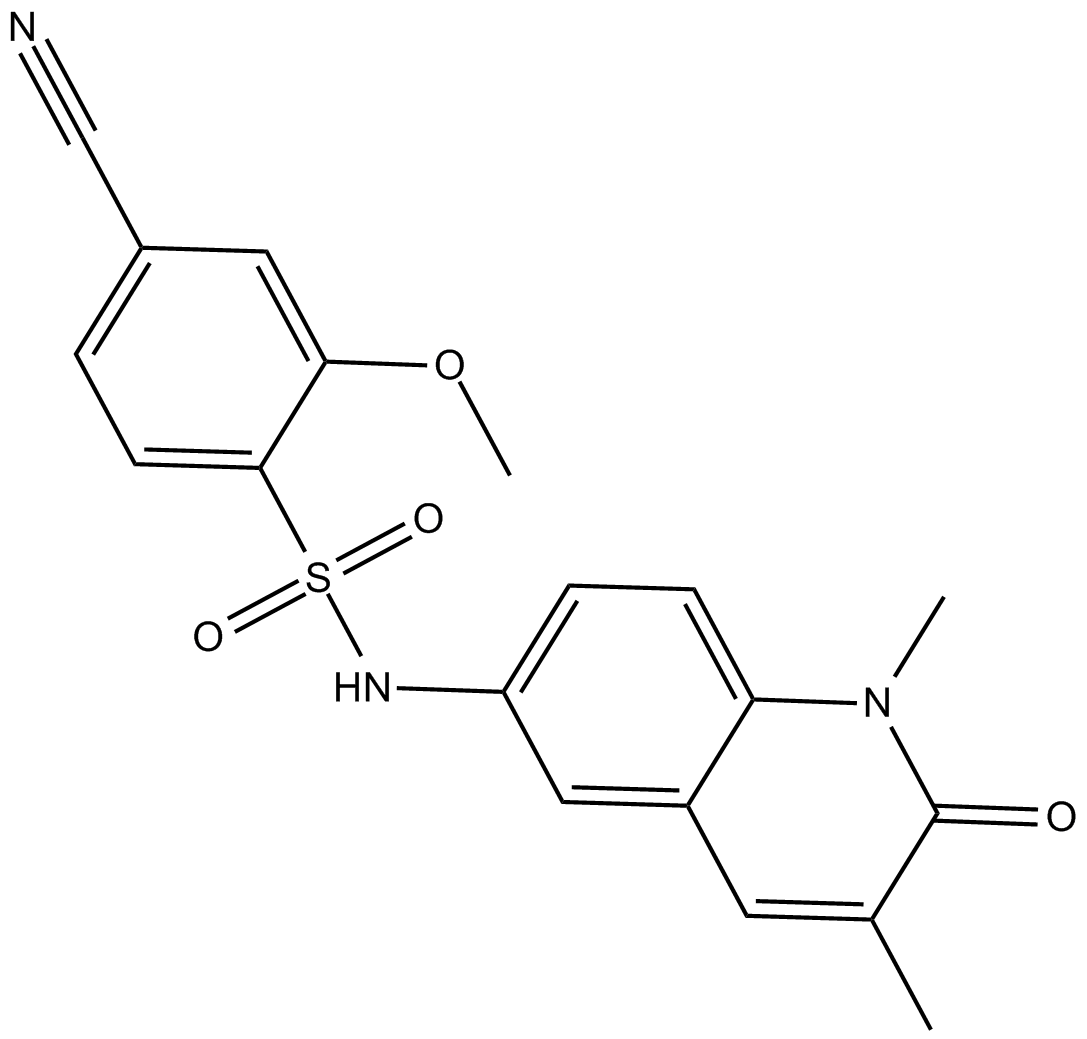NI-57 |
| Catalog No.GC16763 |
bromodomains of BRPF proteins inhibitor
Products are for research use only. Not for human use. We do not sell to patients.

Cas No.: 1883548-89-7
Sample solution is provided at 25 µL, 10mM.
NI-57 is a potent inhibitor of the bromodomain of the BRPFs that binds to BRPF1B, BRPF2, and BRPF3 with Kd values of 31, 108, and 408 nM, respectively [1].
The bromodomain and PHD finger-containing protein 1, 2, 3 (BRPF1/2/3) are scaffolding subunit of the MOZ/MORF histone acetyltransferase complexes that links together KAT6A/B, ING5 and hEAF6 in the tetrameric assembly. BRPF1 (BR140 or Peregrin) is important in the maintenance of expression levels of Hox genes and the development of axial skeleton, multiple tissues and the hematopoietic system [2][3].
NI-57 is a potent inhibitor of the bromodomain of the BRPFs and acts as a chemical probe for the bromodomains of the BRPF family of proteins (BRPF1/2/3). As determined by isothermal titration calorimetry, NI-57 binds to BRPF1B, BRPF2, and BRPF3 with Kd values of 31, 108, and 408 nM, respectively. As measured by both biophysical and biochemical methods, NI-57 exhibited selective against other non-Class IV bromodomains, including the BETs. In the BRPF2 FRAP assay, NI-57 at 1 μM prevented binding of full-length BRPF2 to chromatin [1].
References:
[1]. http://www.thesgc.org/chemical-probes/NI-57
[2]. Klein BJ, Lalonde ME, Cté J, et al. Crosstalk between epigenetic readers regulates the MOZ/MORF HAT complexes. Epigenetics. 2014 Feb;9(2):186-93.
[3]. Ullah M, Pelletier N, Xiao L, et al. Molecular architecture of quartet MOZ/MORF histone acetyltransferase complexes. Mol Cell Biol. 2008 Nov;28(22):6828-43.
Average Rating: 5 (Based on Reviews and 31 reference(s) in Google Scholar.)
GLPBIO products are for RESEARCH USE ONLY. Please make sure your review or question is research based.
Required fields are marked with *




















